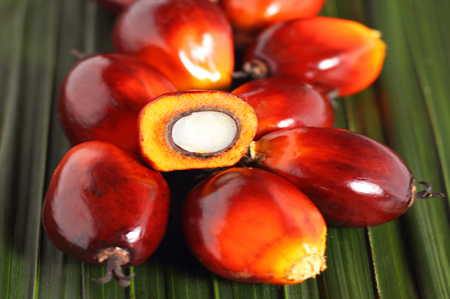 (Agrimoney) – Just how much further can the dollar’s retreat go?
(Agrimoney) – Just how much further can the dollar’s retreat go?
The greenback’s tumble in the last session was viewed as a big fillip to prices of many assets, including wheatand soft commodities, with a cheaper greenback making exports denominated in the currency more affordable.
And the dollar shed further ground on Thursday, if only a further 0.2% as of 09:15 UK time, (03:15 Chicago time).
Still, that was enough to help wheat futures stay in positive territory, although they were this time eclipsed by corn and soybeans, which lagged in the last session.
‘Positive price influences’
In fact, a weak dollar is not the only factor in wheat’s favour, according to Nidera Australia which flagged “several positive price influences”.
“We continue receive reports from India that wheat yields will be lower,” the grain merchant said.
“Secondly, the northern hemisphere crops remain vulnerable to a winter freeze event if snow cover is depleted,” which it appears to
Sure, “global wheat supplies remain more than adequate, but this needs to be considered in the context that prices have already reacted and have fallen significantly,” Nidera added.
“A bigger-than-anticipated production problem in India or a winter freeze event in the northern hemisphere could kick prices.
“The extent of the problem will dictate if it is a temporary price spike or a change in the price trend.”
Egyptian questions
And there are some positive demand influences too, with US Department of Agriculture staff in Pretoria raising their forecast for South African wheat imports in 2015-16 to a record high of 2.0m tonnes, as the shortage of white maize, prompted by drought, spurs consumption of alternative food grains.
Meanwhile, the needs of Egypt, the top wheat importer, remain under the microscope after it backtracked on a zero tolerance policy on ergot contamination in imports which saw it reject a cargo of French wheat at the weekend – and be essentially blacklisted by grain merchants in return.
It may be that sellers “also were worried about Egypt funding the trade”, said Joe Davis at Chicago broker Futures International, noting that the country’s “international [currency] reserves are half of what they were eight years ago”.
Still, it looks like Egypt may have to dig deep for wheat, and soon.
“I don’t see where they have bought enough wheat for early 2016 requirements and expect them back in the market for cheap Black Sea/Argentine offers,” said Brian Henry at Benson Quinn Commodities.
Chicago soft red winter wheat futures rose by 0.3% to $4.81 ¼ a bushel for March delivery, while Kansas City-traded hard red winter wheat added 0.4% to $4.70 ½ a bushel for March.
Informa upgrades
Corn was higher too, up 0.4% at $3.72 ½ a bushel for March, regaining most of its losses of the last session made against the run of other markets.
Besides firmness in fellow grain wheat, and the easing in the dollar, corn was also helped by a resolute performance in oil markets, where WTI light crude was up 0.4% at $32.42 a barrel.
Corn is linked to energy markets through its use in the US largely for making ethanol (although US production of the biofuel eased last week by 2,000 barrels a day to 959,000 barrels a day, official data on Wednesday showed).
Whatever, such help allowed corn futures to overcome the bearish influence which dogged the last session of Informa Economics upgrades to South American production estimates, with the Argentine crop forecast hiked by 4.0m tonnes to 26.0m tonnes, and the Brazil figure nudged higher by 300,000 tonnes to 81.6m tonnes.
Argentine prospects
Soybeans led the pack among the Chicago majors, adding 0.5% to $8.81 a bushel for March delivery, again overcoming some bearish pressure seen in the last session.
Informa Economics on Wednesday increased is forecast for Argentine soybean production by 1.5m tonnes to 60.0m tonnes, albeit cutting its estimate for Brazil by 900,000 tonnes to 100.5m tonnes.
And certainly the consensus is that weather in Argentine is to improve, after a worryingly dry spell.
Futures International’s Joe Davis flagged “projected rainfall for Argentina during the Thursday-through-Sunday period”.
“Weather in Argentina turns wetter by week end supporting soybean production,” said Kim Rugel at Benson Quinn Commodities adding, that “Brazil weather is looking dry to advance early harvest”.
‘Glaring trading pattern’
Still, whether the rise in soybean futures, which has taken the March contract through a range of moving averages – including the 50-day and 100-day – has legs is another thing.
Ms Rugel flagged a “glaring up/down trading pattern” in soybean futures going back to mid-January.
“The bears are tired and have been reducing short exposure in market that has no new fresh bearish stories,” she said.
“But the bulls have no story either which slams market back lower after a recovery bounce.”
Indeed, the” long, and undersold, producer is also seen capping any recovery with hedge selling increasing on uptick sessions”.
‘Adversely affected’
Elsewhere in the oilseeds complex, palm oil appears to have fared better in terms of breaking through a price ceiling, hitting 2,568 ringgit a tonne in early deals – the highest since May 2014 – before easing back to 2,557 ringgit a tonne, a gain of 0.4% on the day.
“Fears that the weather phenomenon El Niño will negatively affect production has sent palm oil prices significantly higher,” Commerzbank said, if raising doubts about how much further prices could rise.
“Even though El Niño may have passed its peak, expectations are that palm oil production is likely to be adversely affected in the first half of 2016.”
The bank flagged a forecast from Oil World that global palm oil output will rise by only some 400,000 tonnes in 2016, compared with a five-year average production rise of 3.2m tonnes per year.




